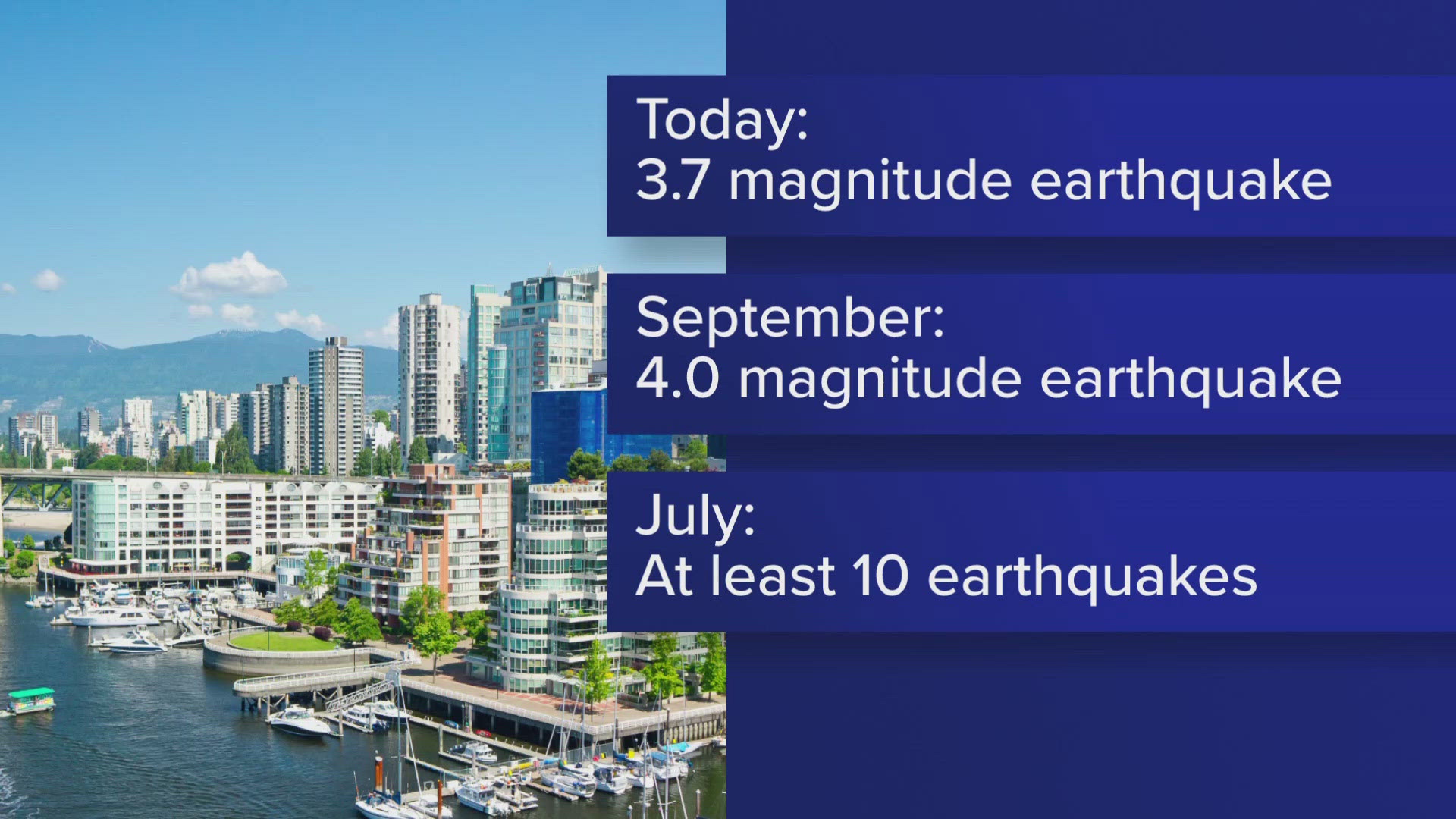RICHMOND, BC — An earthquake that could be felt for miles struck in the waters southwest of Vancouver, British Columbia early Friday morning, according to the Puget Sound Seismic Network (PNSN).
The 3.7 magnitude quake hit just after 2 a.m. Friday between Richmond and Ladysmith, B.C., very close to the U.S.-Canada border in the Strait of Georgia. It was measured at about 37 miles below the earth's surface, PNSN reports.
The earthquake could be felt across British Columbia and even as far east as Bellingham.
In late September, a 4.0 magnitude earthquake was recorded in the waters off Victoria, B.C. Over the summer, there were a flurry of earthquakes well off the coast of Vancouver Island, including a 6.4 magnitude quake.
Earthquakes around western Washington
Many earthquakes in Washington state are linked to the motion of the Juan de Fuca Plate and the North American Continental Plate moving against each other as the Juan de Fuca Plate slips beneath the North American continent, according to PNSN. This is called the Cascadia Subduction Zone.
According to the Washington State Department of Natural Resources (DNR), earthquakes happen in Washington every day, but most are too small to be felt. The state has the second highest risk in the U.S. of experiencing a large and damaging earthquake because of its geologic setting.
The Pacific Northwest typically experiences three types of earthquakes:
- Shallow fault quakes: Ruptures in faults located in the upper 18 miles of the Earth's crust. These earthquakes typically last 20 to 60 seconds and shaking is localized to the area near the fault, according to the DNR.
- Deep earthquakes: Deep faults happen when two tectonic plates collide and one plate slips beneath the other one. These quakes can impact a large area but are less intense.
- Subduction zone earthquakes: This earthquake results from the tension of an oceanic plate slipping beneath a continental plate. When enough stress builds, the fault will rupture, releasing a massive amount of energy. The Cascadia Subduction Zone has the potential for these types of earthquakes and has ruptured in the past. It is one of Washington state's biggest hazards, according to DNR.

